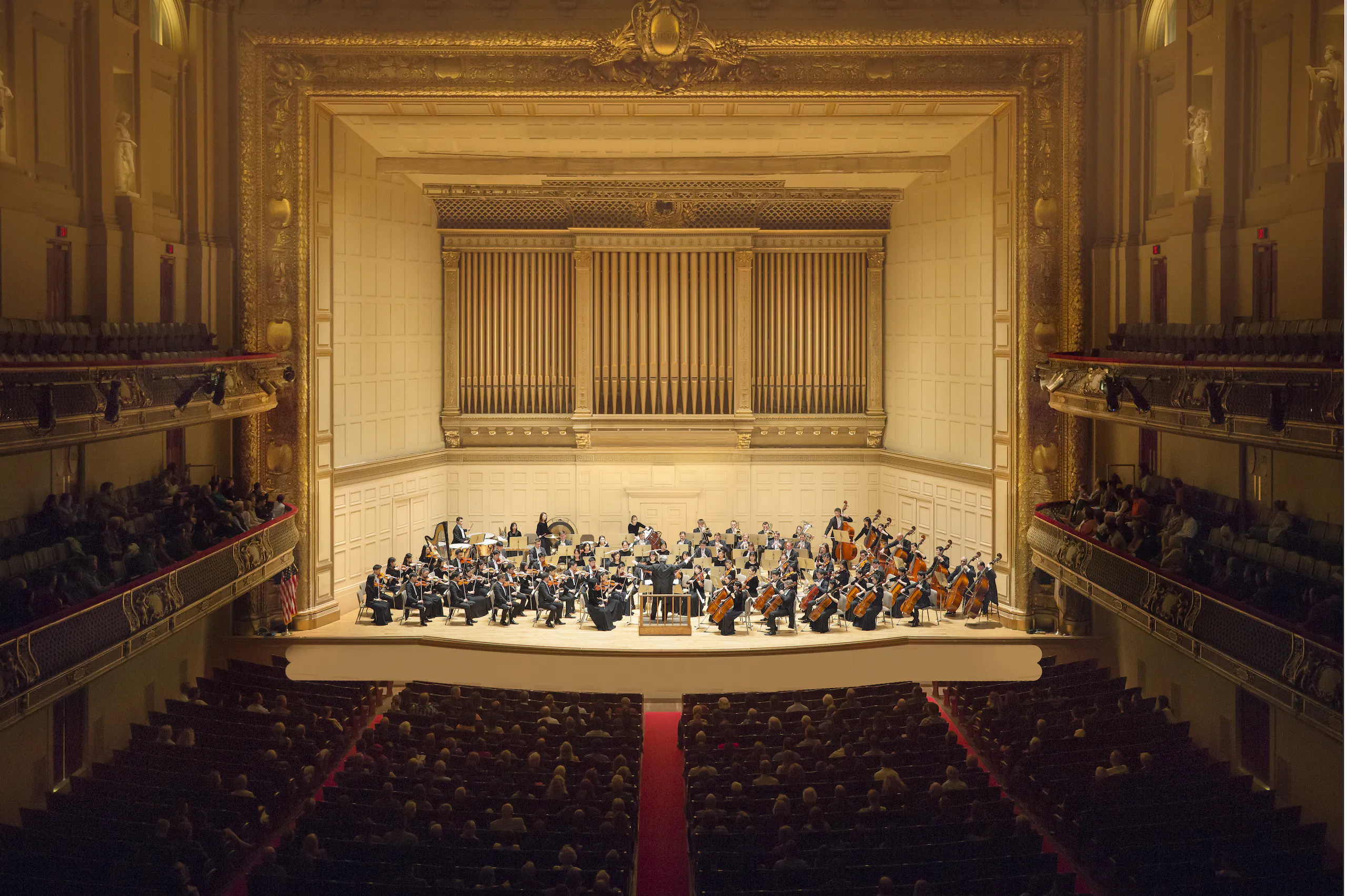After a three-year absence, Shen Yun Symphony Orchestra (SYSO) is returning to the stage with just one day of concerts on Oct. 22 at Lincoln Center in New York.
The orchestra is the first and only ensemble in the world that permanently combines ancient Chinese instruments with a classical Western orchestra.
After the global success of Shen Yun Performing Arts, the renowned classical Chinese dance company, demand was high to hear more of the music. In response, the New York-based company pulled musicians from each of its touring groups—of which there are eight today—to create a 100-piece symphony orchestra. In 2012, SYSO made its debut at Carnegie Hall, and has since graced the stage of concert halls worldwide. The symphony is frequently met with standing ovations, and often even gives encores.
Shen Yun’s music is as unique as its ensemble, with more than a dozen newly composed original works performed for the season’s all-new program. The in-house composers make use of ancient Chinese melodies, authentic ethnic and folk tunes, and the grandeur of a full orchestra.
Audiences frequently peek into the orchestra pit during intermission to try to glimpse which instruments produced the fascinating sounds they heard. But at a SYSO performance, the orchestra is on full display, and concertgoers can see the ancient erhu or pipa play a melody they’ve never heard before, soon to be picked up by the Western strings and brass.
“In our original Shen Yun works, much of the time the pipa and erhu play the melody while the Western instruments accompany them,” said violinist Debbie Jin, a soloist of the upcoming concert, in a Shen Yun interview.
“During these moments, it’s eye-opening to hear how our colleagues who play Chinese instruments express their musical ideas, as they often employ many techniques foreign to us.”
Shen Yun’s mission is to revive China’s 5,000 years of civilization, which was said to be divinely inspired, and its original music certainly sounds Chinese.
However, the ensemble really only includes a few Chinese instruments: the pipa, erhu, and some Chinese percussion instruments like wood blocks or the gong.
The pipa is a Chinese lute that is played upright, and can be strummed or plucked. The “pi” in the instrument’s name, pipa, means plucking the string forward, and “pa” means plucking the string backward, the fundamentals of the instrument technique. As a string instrument, it also employs a lot of techniques familiar to Western string musicians, such as vibrato, pizzicato, and glissando.
The wooden, four-stringed instrument reached its peak of popularity in the 13th century, during the Tang Dynasty, and its construction represents traditional Chinese beliefs.
By ancient Chinese metrics, the pear-shaped instruments were built to be three feet and five inches. The three represents heaven, earth, and humankind—between which the ancient Chinese always sought harmony. The five corresponds to the five elements of mental, wood, water, fire, and earth; and the four strings represented the four seasons.
Its bold cords thunder like a vehement storming,
Its fine strings hum as whispers so lulling,
Loud tones and soft, mingling and bouncing,
Like pearls large and small, onto a jade tray tumbling.“Song of the Pipa” by Ninth century poet Bai Juyi
The erhu is perhaps even more familiar to Western audiences.
The instrument only has two strings, yet it is able to produce a dizzyingly wide range of sounds, moods, and dynamics. It can be used to comic or tragic effect, mimicking birds chirping or horses neighing, or producing heartrending and melancholic melodies. Some say the instrument produces sounds closest to the human voice, comparing the two strings to the human vocal cords.
The erhu is played vertically, with the small wooden box in the lap of the player. The bow is attached permanently to the instrument, between the two strings. The instrument has a long neck, but no fingerboard, and is a difficult instrument to master.
The Oct. 22 program will include several yet-to-be-named original works, as well as Sibelius’s “Finlandia,” Dvorak’s “New World Symphony,” and The Butterfly Lovers Violin Concerto, perhaps the best-known piece of Chinese classical music in the West.
Ms. Jin, an award-winning violinist originally from Sydney, Australia, is a concertmaster with one of Shen Yun’s touring groups. A recording of her performing the “Butterfly Lovers Violin Concerto” can be found on the Shen Yun Creations streaming platform.
“We want to give the audience an uplifting and soul-stirring experience,” said Ms. Jin. “For me, I hope to share the emotions that speak to me from the music—joy, passion, and beauty.”
